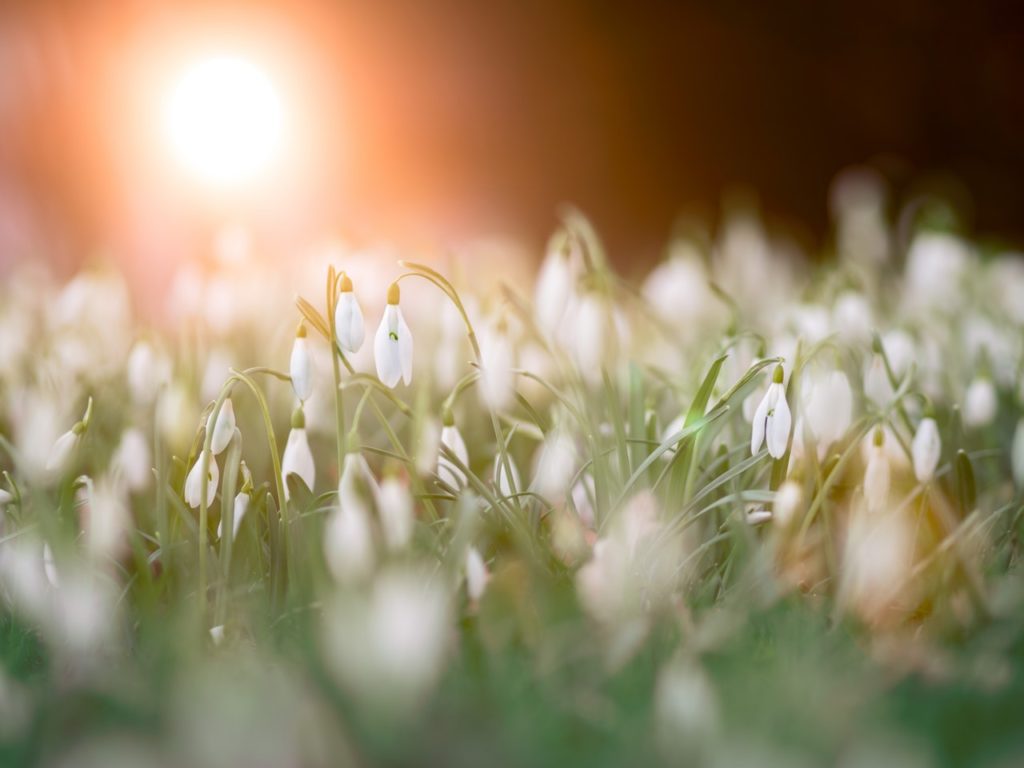We invite you into this contemplation on the Easter scene, provided by long-time practitioner of the Christian Wisdom path, Brian Mitchell. Cynthia describes Brian’s reflection as “….absolutely brilliant, the profound synthesis of a lifetime of seeking, risking, testing, integrating, forgiving, hoping.”

- Let’s set the stage: Jesus has just endured crucifixion and the harrowing of hell—his final acts of self-emptying and kenosis.
- He’s just enacted that pivotal moment when from his cosmological act of atonement/at-one-ment universal salvation gushed forth. The moment of the transformation of the world—a cosmic spring out of which comes the harvest whereby our universe is made new.
- Paul, rightly, says: “For this God raised him on high and gave him the name which is above every other name so that at the name of Jesus every knee should bend, in heaven, on earth, and under the earth. And so every tongue should proclaim ‘Jesus Christ is Lord!’ to God the Father’s glory.”
- Now Maryam loved Yeshua. Loved him as her healer, her Teacher, her Master, her Beloved—her companion. From his teachings and from her relationship with him she came to know One-ness; the One-ness of Love which he taught and embodied over and over and over again. She had come to see herself as a child of God, as one made in God’s image and likeness—as a full participant in divinity. And also as a Beloved. As Jesus’ Beloved.
- But she was, as are we, fully human—and she’s just lost her Beloved.
- After his crucifixion and burial I’m certain that she never wandered far from the tomb. She stayed with him. She couldn’t leave him. So here she returns from a brief walk in the all-but-dark – utterly destroyed, broken-hearted, empty—and the stone has been rolled away. She panics, runs to the others and tells them. They come, see the burial cloth and the cloth that covered his head—and they? They go back home.
- But Maryam stays. Of course she stays. “Where is my Beloved?” She sobs and weeps—and he asks her “Who are you looking for?”. “I don’t know where they’ve put my Master. Where have they moved him? I need to take him away.”
- And Jesus simply replies: “Mary”. Stunned, shocked, moved to her body’s and soul’s core she throws herself upon him.
- Then, gently unwrapping himself from her grasp, Jesus says: “Don’t touch me—because I have not yet gone back to the Father”. He’s saying “Don’t cling to what I was, to whatever I meant to you before, to an image of me. Because everything is now all new. Brand new. We now know with absolute certainly that Love is stronger than death.
- So he says: “Go and tell my brothers ‘I’m going back to my Father and your Father—to my God and your God.” Of course she’s the first to behold and to know the revelation of God’s ineffable Fullness—the first apostle.
- Her love for him and his love for her had transformed both of them—their having had to endure their suffering and then manifest their mutual love becomes our template for breaking through our own individual as well as our world’s trauma, darkness, brokenness and terror.
- Jesus was crucified, harrowed hell and resurrected only because he went through it. It’s the same for each of us and for our societies and our planet and her creatures. It seems quite clear that individually and collectively we are now going through a crucifixion—it’s our collective dark night. So it’s essential that we have the courage to face and own our individual and our collective unconscious—our shadow.
- We must not retreat into our individual, small worlds in a misguided quest for personal safety and sanity. We must find the communal meaning and significance of the suffering of all life. A Crucified God is the dramatic symbol of the one suffering that God fully enters into with us—not just for us, as we were mostly taught to think, but in solidarity with us. The Good News is we do not have to hold that suffering alone. In fact, we cannot hold it alone.
- There is a place, a safe home, for us where we are not alone. And Love—God, the Ground of Being—is that home. It’s the Love that Maryam and Yeshua felt for their common Father and for each other. As we embrace that Love we too rise—creation too resurrects.
- We come to know the truth behind the Ukrainian words “Khrystos voskres”—“Christ has risen!” To which we make the only possible response: “Voistynu voskres” “He is risen indeed!”
*****
 Brian Mitchell lives in Kamloops BC Canada, where he companions a long-standing community of contemplatives and seekers. He describes himself as “… following the Christian Wisdom path (knowingly or unknowingly) all my life. Encountering teachers such as Cynthia Bourgeault, Bruno Barnhart and Raimon Panikkar have lit that path brightly enough that I am no longer afraid of walking it.”
Brian Mitchell lives in Kamloops BC Canada, where he companions a long-standing community of contemplatives and seekers. He describes himself as “… following the Christian Wisdom path (knowingly or unknowingly) all my life. Encountering teachers such as Cynthia Bourgeault, Bruno Barnhart and Raimon Panikkar have lit that path brightly enough that I am no longer afraid of walking it.”


